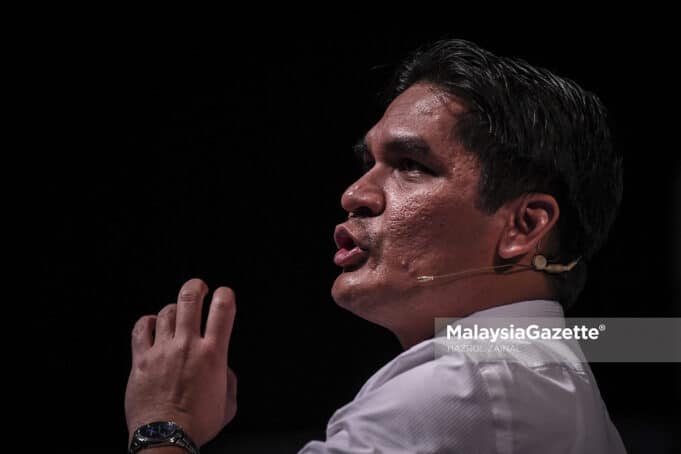KUALA LUMPUR – The decision for the Ministry of Education (MOE) to close schools for 10 days after the Aidilfitri holidays was aimed to protect the schools from Covid-19 infection.
Minister of Education, Datuk Radzi Jidin explained about the recent decision taken by the MOE, stating that the ministry has gone through various experiences in the past one year in overcoming the Covid-19 pandemic in the education sector.
However, the MOE has never gone through a period of reopening schools right after the Aidilfitri celebration as last Aidilfitri, the schools were still closed due to the Movement Control Order (MCO).
According to Radzi, based on the data issued by the Ministry of Health (MOH), on 25 April 2021, 60.8% of Covid-19 cases for 2021 were sporadic cases, where, an individual does not have any travel history or close contact to Covid-19 case, but, that person is tested positive. Meanwhile, 39.2% were cluster cases.
He said, from that 39.2%, 2.07% were clusters related to institutions under the MOE. These cases involved hostels (1.42%), meanwhile, the non-hostels recorded 0.53%.
“Looking at the data and taking into factor that the MOE has never reopen schools after the Aidilfitri celebration, we discussed in details on the pros and cons of allowing the students to return to schools within the period of 10 days after the raya break and before the semester break begins.
“Realising that there are many sporadic cases in the community and cluster cases involving gatherings, the school community, like all other Malaysians, are exposed to infection outside the school.
“If this happens, perhaps, the infection outside the school could be brought into the school,” he said in a Facebook post.
The explanation came right after the announcement on the home-based teaching and learning (PdPR) session for two weeks after the Hari Raya Aidilfitri holidays until the semester break to reduce the risk of Covid-19 infection.
The PdPR session will begin on 16 May for schools in Group A (Kelantan Johor Kedah and Terengganu), meanwhile schools in Group B (Perlis, Perak, Pahang, Sabah, Labuan, Sarawak, Negeri Sembilan, Pulau Pinang, Selangor, Kuala Lumpur, Melaka and Putrajaya) will begin their PdPR a day after that on 17 May.
The PdPR will end for schools in Group A on 27 May while the schools in Group B will end a day later.
Radzi added, although the standard operating procedures (SOP) in schools are being implemented strictly, however, each infection that happens to the teachers, students or staff outside the schools could be seen as if they originated from the schools.
Besides that, if there are many infections outside the schools, the schools need to be closed for at least two days if there are positive cases. Thus, it forms a persception that as if, many infections happened in schools.
“This would impact the confidence of the parents on the SOP in schools.
“Besides that, there are possibility that the students in the hostels got infected during the festive season and upon returning to their dorms, they may infect other students in the dorms for the 10 schooling days.
“The possibility is there,” he said.
Despite that, he emphasized that the MOE would try to avoid the changes in school schedule as long as the situation permits.
He said, any changes in the schedule would affect almost 5 million of students and 500,000 teachers and their families directly and indirectly.
“I hope that this explanation can provide a clearer picture on the basis on MOE’s consideration in making the decision to implement PdPR for 10 schooling days after the Aidilfitri before the school semester break.
“Of course, we cannot fulfil the wish of everyone in every decision that we make. We also realise that we are not perfect. However, MOE is always committed to do the best,” said Radzi. –MalaysiaGazette
Read More:
2 weeks of PdPR after Aidilfitri holidays

















